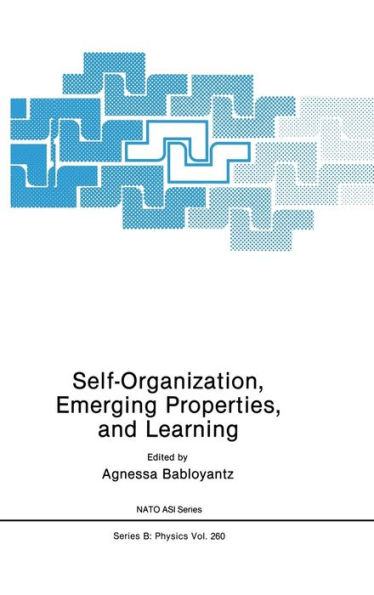Self-Organization, Emerging Properties, and Learning
This volume contains the proceedings of the workshop held in March 1990 at Austin, Texas on Self-Organization, Emerging Properties and Learning. The workshop was co-sponsored by NATO Scientific Affairs Division, Solvay Institutes of Physics and Chemistry, the University of Texas at Austin and IC2 Institute at Austin. It gathered representatives from a large spectrum of scientific endeavour. The subject matter of self-organization extends over several fields such as hydrodynamics, chemistry, biology, neural networks and social sciences. Several key concepts are common to all these different disciplines. In general the self-organization processes in these fields are described in the framework of the nonlinear dynamics, which also governs the mechanisms underlying the learning processes. Because of this common language, it is expected that any progress in one area could benefit other fields, thus a beneficial cross fertilization may result. In last two decades many workshops and conferences had been organized in various specific fields dealing with self-organization and emerging properties of systems. The aim of the workshop in Austin was to bring together researchers from seemingly unrelated areas and interested in self-organization, emerg{ng properties and learning capabilities of interconnected multi-unit systems. The hope was to initiate interesting exchange and lively discussions. The expectations of the organiziers are materialized in this unusual collection of papers, which brings together in a single volume representative research from many related fields. Thus this volume gives to the reader a wider perspective over the generality and ramifications of the key concepts of self organization.
1101683429
Self-Organization, Emerging Properties, and Learning
This volume contains the proceedings of the workshop held in March 1990 at Austin, Texas on Self-Organization, Emerging Properties and Learning. The workshop was co-sponsored by NATO Scientific Affairs Division, Solvay Institutes of Physics and Chemistry, the University of Texas at Austin and IC2 Institute at Austin. It gathered representatives from a large spectrum of scientific endeavour. The subject matter of self-organization extends over several fields such as hydrodynamics, chemistry, biology, neural networks and social sciences. Several key concepts are common to all these different disciplines. In general the self-organization processes in these fields are described in the framework of the nonlinear dynamics, which also governs the mechanisms underlying the learning processes. Because of this common language, it is expected that any progress in one area could benefit other fields, thus a beneficial cross fertilization may result. In last two decades many workshops and conferences had been organized in various specific fields dealing with self-organization and emerging properties of systems. The aim of the workshop in Austin was to bring together researchers from seemingly unrelated areas and interested in self-organization, emerg{ng properties and learning capabilities of interconnected multi-unit systems. The hope was to initiate interesting exchange and lively discussions. The expectations of the organiziers are materialized in this unusual collection of papers, which brings together in a single volume representative research from many related fields. Thus this volume gives to the reader a wider perspective over the generality and ramifications of the key concepts of self organization.
169.99
In Stock
5
1

Self-Organization, Emerging Properties, and Learning
300
Self-Organization, Emerging Properties, and Learning
300Hardcover(1991)
$169.99
169.99
In Stock

Product Details
| ISBN-13: | 9780306439308 |
|---|---|
| Publisher: | Springer US |
| Publication date: | 09/30/1991 |
| Series: | NATO Science Series B: , #260 |
| Edition description: | 1991 |
| Pages: | 300 |
| Product dimensions: | 6.10(w) x 9.25(h) x (d) |
From the B&N Reads Blog
